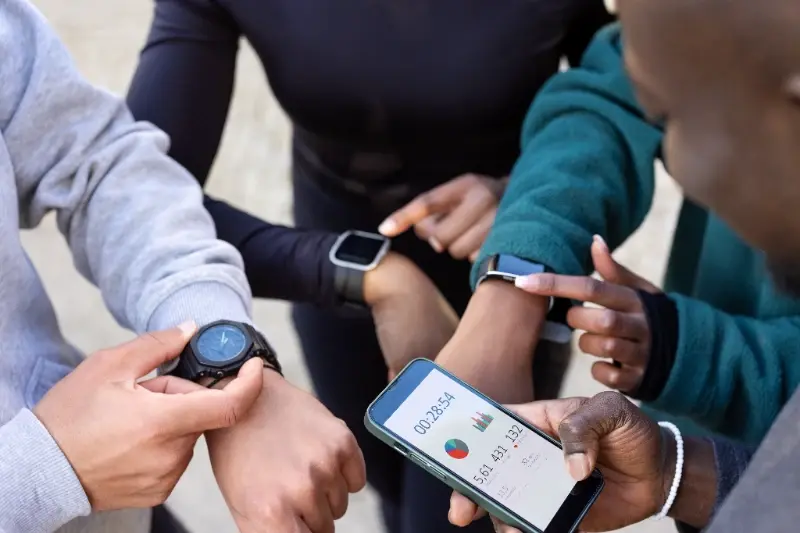When to Pivot: Reading App Feasibility Warning Signs
You've poured months of work into your mobile app idea. You've sketched wireframes, built prototypes, and maybe even launched a beta version. But something feels off. Downloads are slower than expected, user feedback is lukewarm at best, and that nagging voice in your head keeps asking whether you're on the right track. Sound familiar?
This is one of the toughest spots any app developer or business owner can find themselves in. After investing so much time, money, and emotional energy into a project, recognising when things aren't working feels like admitting defeat. But here's what I've learned after eight years in mobile app development: knowing when to pivot isn't a sign of failure—it's smart business sense.
The most successful apps aren't always the ones that got everything right from day one; they're the ones that recognised problems early and had the courage to change direction
An app pivot strategy doesn't mean starting from scratch or abandoning your vision completely. Sometimes it means tweaking your target audience, adjusting features, or even changing your monetisation model. The key is spotting those feasibility warning signs before they become expensive mistakes. Mobile app viability depends on dozens of factors working together—user engagement, market fit, technical performance, and financial sustainability. When one or more of these elements starts showing cracks, smart app development decisions become the difference between salvaging your investment and watching it disappear into the app store void.
Understanding App Viability Warning Signs
After building apps for over eight years, I can spot the warning signs of a struggling app from miles away. It's like having a sixth sense—you start noticing patterns that spell trouble before things get really messy. The tricky part is that these signs often creep up slowly, disguised as temporary setbacks or minor hiccups.
The first red flag I always watch for is when development timelines keep stretching without clear reasons. Sure, complex features take time, but when simple updates start taking months instead of weeks, something's wrong. This usually points to deeper technical issues or a fundamental misunderstanding of what the app actually needs to do. I've seen teams spend ages building features nobody asked for whilst ignoring the basics that users desperately want.
When the Numbers Don't Add Up
Another major warning sign is when your app's core metrics start telling different stories. Downloads might look decent, but if nobody's using the app after the first week, you've got a problem. Active users should generally grow alongside downloads—when they don't, it means people are trying your app and walking away disappointed.
Budget overruns are equally telling. If you're constantly needing more money just to keep the lights on (not for growth or new features), that's a serious viability issue. Apps should become more efficient to run as they mature, not more expensive.
The Team Starts Losing Faith
Perhaps the most telling sign is when your own team starts questioning the app's direction. When developers, designers, or stakeholders begin suggesting major changes to the core concept, it's time to step back and honestly assess whether you're building something people actually want.
Market Feedback Red Flags
When you're deep in app development, it's easy to get tunnel vision. You're so focused on building features and fixing bugs that you might miss what your potential users are actually telling you. But here's the thing—market feedback is one of the most reliable indicators of whether your app pivot strategy needs to kick into gear.
The biggest red flag? When people struggle to understand what your app does within the first few seconds of using it. If your beta testers are asking "what is this for?" or "how do I even start?", that's not a user interface problem—that's a fundamental concept issue. Users shouldn't need a manual to figure out your app's basic purpose.
When Enthusiasm Turns Into Silence
Pay close attention to how conversations change over time. Early supporters who were excited about your idea but have gone quiet are telling you something important. They might be too polite to say your app isn't working for them, but their silence speaks volumes about mobile app viability.
Another warning sign that catches many developers off guard is when feedback becomes consistently focused on what your app should do differently rather than what it does well. If every piece of feedback is essentially asking you to build a completely different product, you're probably looking at feasibility warning signs that can't be ignored.
Track feedback patterns over time rather than individual comments. If the same concerns keep coming up from different users, that's your market telling you something needs to change.
Remember, constructive criticism about features is normal—but when people question the entire premise of your app, it's time to seriously consider your app development decisions moving forward.
Technical Feasibility Issues
When your development team starts throwing around words like "impossible" or "technically unfeasible," it's time to pay attention. These aren't just excuses—they're genuine warning signs that your app might be heading for trouble.
The most obvious red flag is when basic features take far longer to build than expected. If what should be a simple login system is taking weeks instead of days, something's wrong. Maybe the architecture is too complex, or perhaps the team doesn't have the right skills for your specific requirements.
Performance and Scalability Concerns
Apps that crash frequently during testing or run painfully slowly on standard devices are sending clear signals. Users won't tolerate an app that freezes every time they try to upload a photo or takes thirty seconds to load a simple screen. If your app can't handle ten users without breaking, how will it cope with thousands?
Third-party integrations can also become massive headaches. When payment systems won't connect properly, or social media logins keep failing, you're looking at fundamental technical problems that could derail your entire project.
When the Code Becomes Unmaintainable
Here's something many founders overlook: if your developers are constantly rewriting code instead of adding new features, you've got a problem. Good code should be like building blocks—each new feature should fit naturally with what's already there.
The final warning sign? When fixing one bug creates three more. This usually means the technical foundation is shaky, and continuing to build on it will only make things worse. Sometimes learning from successful app development practices can help you avoid these technical pitfalls entirely.
Financial Performance Indicators
Money talks, and when your app's financial numbers start whispering instead of shouting, it's time to pay attention. I've worked with enough apps over the years to know that poor financial performance is often the clearest signal that something needs to change—and fast.
The most obvious red flag is declining revenue. If your app's making less money month after month, despite your best efforts to improve it, that's a problem you can't ignore. But revenue isn't the only number that matters. Your customer acquisition cost might be climbing whilst your lifetime value stays flat; that's a recipe for disaster that'll drain your budget quicker than you'd expect.
Key Metrics That Matter
Look at your conversion rates from free to paid users—if they're consistently dropping, users aren't seeing enough value to justify spending money. Your churn rate tells a similar story; when people stop using your app quickly after downloading it, they're voting with their feet.
The hardest part about reading financial warning signs isn't spotting them—it's accepting what they're telling you about your app's future
When Numbers Don't Lie
Sometimes the maths is brutal but honest. If you're spending more to acquire each user than they'll ever pay you back, that's not sustainable—no matter how much you love your app idea. High development costs paired with low user spending creates a gap that gets harder to bridge over time. These financial warning signs often appear months before other problems become obvious, making them your earliest alert system for when an app pivot strategy might be necessary.
User Engagement Problems
Low user engagement is one of the clearest warning signs that your app might need a serious rethink. I've watched countless apps launch with fanfare, only to see their user numbers drop off a cliff within weeks. The harsh reality is that if people aren't actively using your app, you're fighting a losing battle.
The numbers don't lie when it comes to engagement issues. If your daily active users are consistently below 10% of your total downloads, that's a red flag waving frantically in your face. High uninstall rates—anything above 20% in the first week—tell you that people are trying your app and deciding it's not worth keeping. App store ratings below 3.5 stars make it nearly impossible to attract new users organically.
Session Length and Frequency Matter
Short session times can indicate that users aren't finding value in your app quickly enough. If people are opening your app and closing it within 30 seconds, they're probably confused or bored. Similarly, if users aren't returning within the first three days after downloading, the chances of them ever becoming regular users drop dramatically.
Social Sharing and Word-of-Mouth
When users love an app, they naturally share it with friends or talk about it on social media. If your app isn't generating any organic buzz or social shares, it suggests people aren't excited about what you've built. This lack of enthusiasm often points to fundamental problems with the app's core value proposition—problems that minor tweaks won't fix. Sometimes the kindest thing you can do for your app is to step back and seriously consider whether it's solving a real problem that people actually care about.
Conclusion
Making the decision to pivot your app isn't easy—I get that. You've probably invested months of your time, loads of energy, and quite possibly a fair chunk of money into your original vision. But here's what I've learned after years in this business: the most successful app owners are the ones who can spot these warning signs early and act on them quickly.
The feasibility warning signs we've covered aren't meant to scare you off; they're meant to save you from bigger problems down the road. Poor market feedback, technical roadblocks that seem impossible to solve, money running out faster than it's coming in, and users who just won't stick around—these are all signals that something needs to change. And change doesn't always mean giving up.
Sometimes a pivot means tweaking your target audience. Other times it might mean completely rethinking your app's core function. I've seen apps transform from social platforms into productivity tools, and gaming apps become educational resources. The key is recognising when your current path isn't working and having the courage to try something different.
Your app development decisions should always be based on real data, not just gut feelings or wishful thinking. If you're seeing multiple warning signs from different areas—market, technical, financial, and user engagement—that's your cue to seriously consider pivoting. Trust the process, listen to what the signs are telling you, and remember that pivoting isn't failing; it's adapting to build something that actually works.
Share this
Subscribe To Our Blog
You May Also Like
These Related Stories

Wearable Apps vs Mobile Apps: What's the Difference?

The Ultimate Guide to User Testing Your Mobile App (before It's Too Late)





